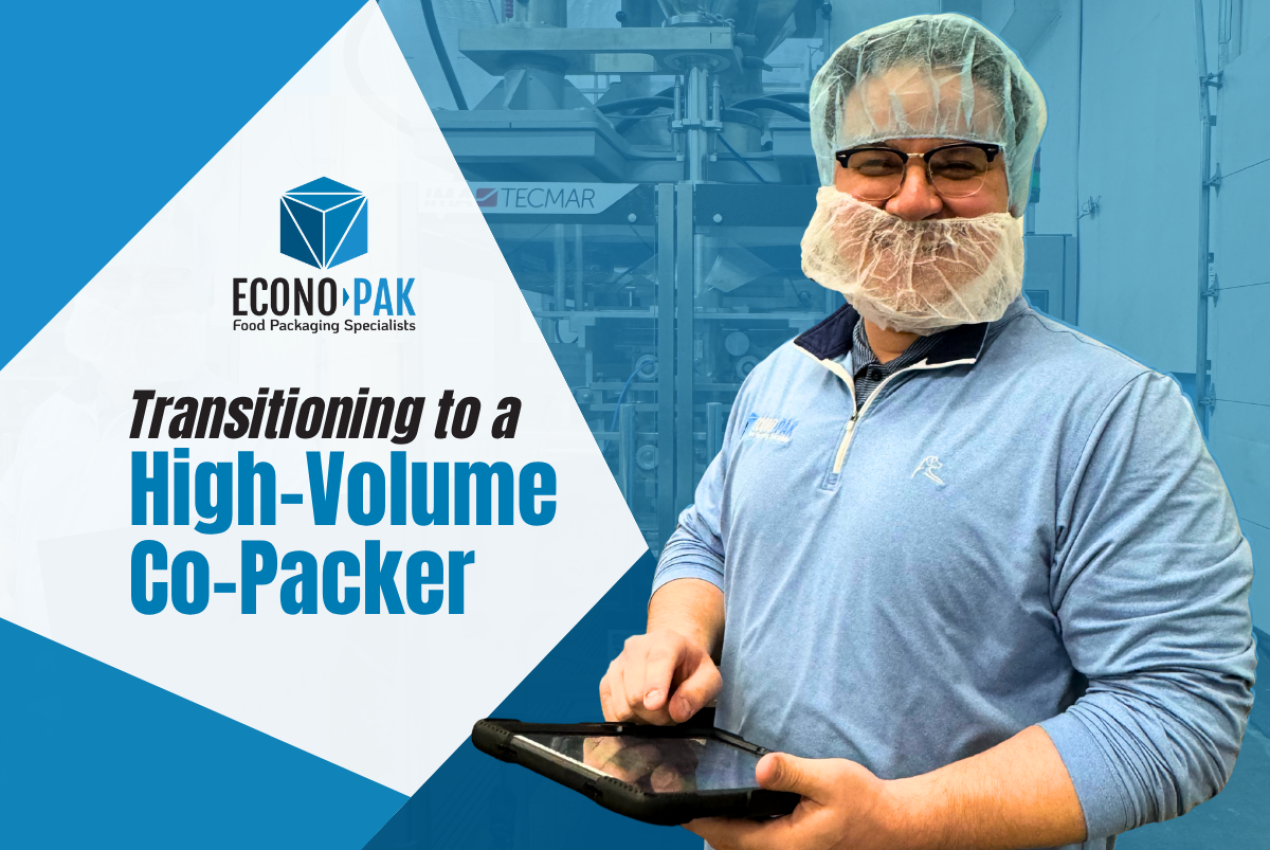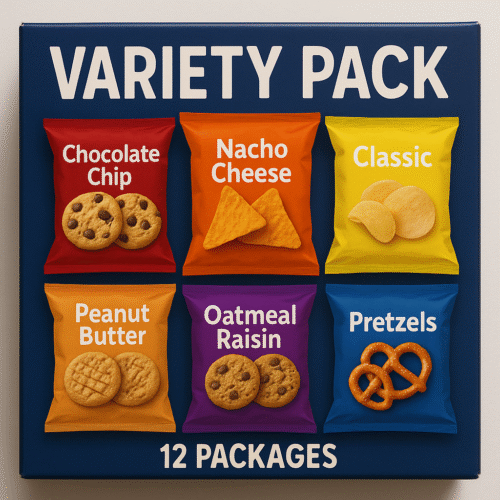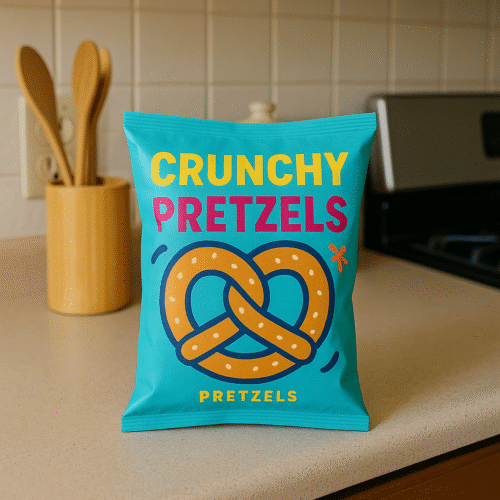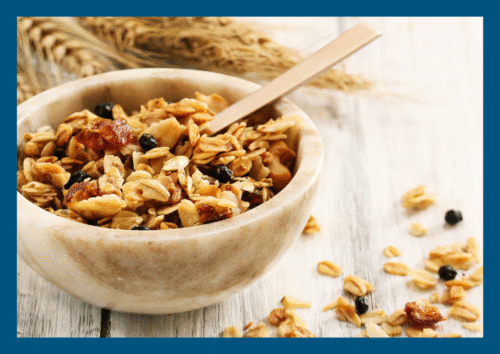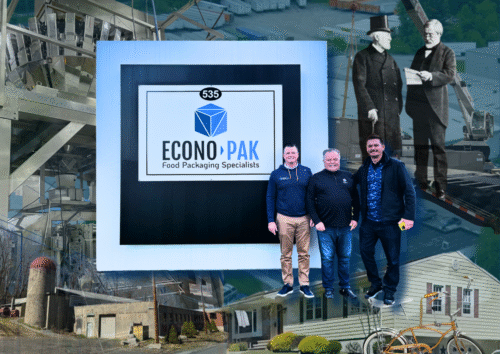As your food brand grows, the demand for higher production volumes, increased efficiency, and expanded capabilities becomes inevitable. For many small and medium-sized food businesses, co-packers play an essential role in scaling operations, but not all co-packers are equipped to handle rapid growth.
When production requirements outgrow the capabilities of a small co-packer, transitioning to a large co-packer can offer the tools, technology, and resources necessary to sustain and accelerate growth.
Key Differences Between Small and Large Co-Packers
Choosing between a small co-packer and a large high-volume co-packer is a pivotal step in scaling your food brand. As your business grows, the right co-packing partner can help you meet rising demand, streamline production, and access major retail markets.
Understanding the differences between small co-packers and large contract food packaging companies will help you determine when it’s time to upgrade to a partner that offers the capacity, technology, and services needed to support your long-term growth.
Small co-packers
Lower volume capacity: Ideal for emerging brands and small batch production but limited in scaling to meet larger retail demand.
Hands-on approach: Often able to provide manual packaging services, making them a good fit for startups and low-volume niche products.
Basic service offerings: May only offer specific types of filling, cartoning, and other packaging services.
Simpler equipment: Use smaller-scale machinery suitable for low-volume runs but less suited for large-scale automation.
Large high-volume co-packers
High production capacity: Equipped to handle large order volumes for big-box retailers and national grocery chains.
Expanded services: Offer additional capabilities such as market diversification, contract manufacturing services such as blending, and more.
Advanced technology: Invest in automation and sophisticated machinery to increase efficiency and ensure consistent product quality.
Cost efficiency at scale: Require higher minimum commitments but deliver better economies of scale with lower per-unit costs as demand grows.
Signs It’s Time to Transition to a Large Co-Packer
Transitioning to a large co-packer isn’t a decision you make overnight. There are several telltale signs that it’s time to make the switch:
1. Increased demand:
When your existing co-packer struggles to meet the growing demand for your product, it may be time to move on. If lead times are increasing and orders are being delayed, it’s a clear sign that you’ve outgrown your current arrangement.
2. Operational efficiency:
If your co-packer can’t keep up with the speed and precision your business requires, a large co-packer may offer faster turnaround times. Larger facilities typically have optimized processes and more advanced technology to support higher production speeds while maintaining product consistency.
3. Compliance and certifications:
Large co-packers often maintain a wide range of food safety certifications, such as SQF (Safe Quality Food), organic and kosher certifications, and more. As you expand into larger markets, having a partner with the necessary certifications can help ensure you meet the regulatory requirements of larger retailers.
4. Entering new markets:
If you’re looking to sell your product in major retailers like Costco, Walmart, or national grocery chains, large co-packers are often better suited for this type of scaling. They have experience in meeting the requirements of these retailers, including the ability to handle bulk shipments and ensure that products meet stringent quality standards.
Evaluating Large Co-Packers for Your Brand
Choosing the right large co-packer is a critical decision that can directly impact your brand’s success. Start by researching their reputation and track record, focusing on whether they’ve worked with products that share your production, storage, or compliance requirements. Ask for references or testimonials to validate their industry standing.
Next, consider their capacity for growth. Even if they can handle your current production levels, you need assurance they can scale with you as demand increases. Be upfront about your growth goals and confirm they have the space, equipment, and resources to match your trajectory.
Pricing transparency is another key factor. Some co-packers offer fixed-cost pricing to simplify budgeting and avoid surprises, while others rely on variable cost models that may offer flexibility but risk unpredictable expenses.
Technology should also play a major role in your evaluation. Co-packers with automation, custom packaging solutions, and advanced quality control systems can maintain consistency and efficiency as your volumes grow.
Finally, prioritize customer support and communication. Large operations can be complex, so it’s essential to work with a co-packer that offers clear communication protocols, dedicated account managers, and project management support to keep your production on track and your brand a priority.
Steps to Smoothly Transition to a Large Co-Packer
Transitioning to a large co-packer can be a complex process, but with the right steps in place, you can ensure it goes smoothly:
1. Plan the transition early:
Start preparing for the switch long before it becomes absolutely necessary. A last-minute transition can lead to production delays, miscommunication, and even supply chain disruptions. Build in plenty of time for onboarding the new co-packer and testing their processes.
2. Audit your current operations:
Before making the switch, take the time to document your current production processes, volumes, and quality standards. Share this detailed information with your new co-packer so they can understand your expectations and any unique requirements of your product.
3. Build strong partnerships:
Treat your new co-packer as a partner, not just a service provider. Establish clear expectations, be transparent about your growth goals, and make sure both sides are aligned on timelines and performance metrics. A strong working relationship is key to long-term success.
4. Monitor the first production runs:
During the first few production cycles, closely monitor product quality, production timelines, and communication. If any issues arise, address them immediately with your co-packer to ensure that they can be resolved before full-scale production ramps up.
Position Your Brand for Continued Success
Scaling your production from a small to a large co-packer is a significant step that can position your brand for long-term success. As demand for your product grows, partnering with a larger co-packer can provide the capacity, technology, and support needed to meet customer expectations and enter new markets. However, ensuring that you choose the right co-packer and manage the transition carefully is essential for a smooth process.
By evaluating your options and planning thoroughly, you can make the transition confidently and set your brand up for continued growth.
Let's start scaling.
Is your demand outpacing your ability to package your own product? Then consider outsourcing with Econo-Pak.
With over 40 years of experience working with both small brands and Fortune 500 companies, we are capable of handling your specific dry food product.
Get in touch with our team for a fixed-price quote for your project.

